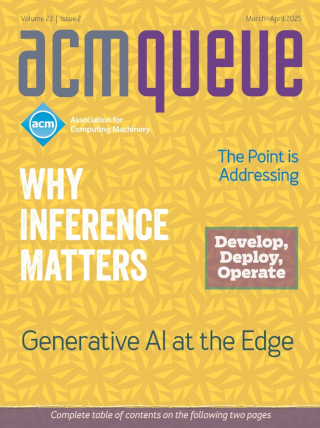
Open Spectrum:
A Path to Ubiquitous Connectivity
Just as open standards and open software rocked the networking and computing industry, open spectrum is poised to be a disruptive force in the use of radio spectrum for communications. At the same time, open spectrum will be a major element that helps continue the Internet’s march to integrate and facilitate all electronic communications with open standards and commodity hardware.
Designing Portable Collaborative Networks:
A middleware solution to keep pace with the ever-changing ways in which mobile workers collaborate.
Peer-to-peer technology and wireless networking offer great potential for working together away from the desk - but they also introduce unique software and infrastructure challenges. The traditional idea of the work environment is anchored to a central location - the desk and office - where the resources needed for the job are located. Even in the many professions where the practitioners move among different field locations, such as professional consulting, health care, or resource exploration, the full set of information and technology resources has been available only in fixed locations where the workers "check in" periodically to integrate their field results back into the larger picture.
The Woes of IDEs:
Programming speed and quality are hindered by poor integrated development environment interfaces.
Preaching emanating from the ranks and gurus of the human interface world is slowly convincing management, software designers--and even programmers--that better human-machine interfaces can increase productivity by speeding the work, decreasing learning time, lowering the burden on human memory, and easing users’ physical and mental stress.
The Future of WLAN:
Overcoming the Top Ten Challenges in wireless networking--will it allow wide-area mesh networks to become ubiquitous?
Since James Clerk Maxwell first mathematically described electromagnetic waves almost a century and a half ago, the world has seen steady progress toward using them in better and more varied ways. Voice has been the killer application for wireless for the past century. As performance in all areas of engineering has improved, wireless voice has migrated from a mass broadcast medium to a peer-to-peer medium. The ability to talk to anyone on the planet from anywhere on the planet has fundamentally altered the way society works and the speed with which it changes.
Self-Healing Networks:
Wireless networks that fix their own broken communication links may speed up their widespread acceptance.
The obvious advantage to wireless communication over wired is, as they say in the real estate business, location, location, location. Individuals and industries choose wireless because it allows flexibility of location--whether that means mobility, portability, or just ease of installation at a fixed point. The challenge of wireless communication is that, unlike the mostly error-free transmission environments provided by cables, the environment that wireless communications travel through is unpredictable. Environmental radio-frequency (RF) "noise" produced by powerful motors, other wireless devices, microwaves--and even the moisture content in the air--can make wireless communication unreliable.
The Family Dynamics of 802.11:
The 802.11 family of standards is helping to move wireless LANs into promising new territory.
Three trends are driving the rapid growth of wireless LAN (WLAN): The increased use of laptops and personal digital assistants (PDAs); rapid advances in WLAN data rates (from 2 megabits per second to 108 Mbps in the past four years); and precipitous drops in WLAN prices (currently under $50 for a client and under $100 for an access point).
A Conversation with Mario Mazzola:
To peek into the future of networking, you don’t need a crystal ball. You just need a bit of time with Mario Mazzola, chief development officer at Cisco.
Mazzola lives on the bleeding edge of networking technology, so his present is very likely to be our future. He agreed to sit down with Queue to share some of his visions of the future and the implications he anticipates for software developers working with such rapidly evolving technologies as wireless networking, network security, and network scalability.
Caching XML Web Services for Mobility:
In the face of unreliable connections and low bandwidth, caching may offer reliable wireless access to Web services.
Web services are emerging as the dominant application on the Internet. The Web is no longer just a repository of information but has evolved into an active medium for providers and consumers of services: Individuals provide peer-to-peer services to access personal contact information or photo albums for other individuals; individuals provide services to businesses for accessing personal preferences or tax information; Web-based businesses provide consumer services such as travel arrangement (Orbitz), shopping (eBay), and e-mail (Hotmail); and several business-to-business (B2B) services such as supply chain management form important applications of the Internet.



